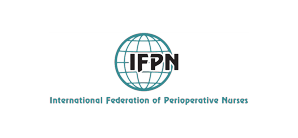NURSING INTERVENTIONS FOR THE PREVEN-TION AND MANAGEMENT OF STOMATITIS IN CHILDREN WITH LEUKEMIA UNDERGOING CHEMOTHERAPY
Athanasia Michailidou, Ioannis Koutelekos, Eleni Evagelou, Maria Moschovi, Evangelos Dousis
Friday, October 1, 2021
Publication year:
2021
Authors:
- Michailidou Athanasia, RN, MSc(c), MSc in “Clinical Pediatrics and Nursing-Research”
- Koutelekos Ioannis, PhD, Associate Professor, Department of Nursing A',Technological Educational Institute of Athens
- Evagelou Eleni, Professor of Nursing , TEI of Athens
- Moschovi Maria, Associate Professor, Medical Department, National & Kapodistrian University of Athens
- Dousis Evangelos, Assistant Professor, Department of Nursing, University of West Attika
Keywords index:
Pages: 276-293
Abstract:
Introduction: Chemotherapy for the treatment of leukemia often leads to serious complications, including stomatitis. Stomatitis is an inflammation of the oral mucosa that occurs most often in children and causes high levels of pain due to lesions of the oral cavity. Despite the many treatments suggested, none are effective and safe in all cases for use in clinical practice.Aim: The purpose of this systematic review was to investigate nursing therapeutic interventions for the prevention and management of chemotherapy induced stomatitis (CIS) in children with leukemia.Material-Methods: A thorough search was made on the existing literature of the last 10 years (2009 - 2019) in the PubMed and Google Scholar databases using the following keywords: leukemia, acute leukemia, chronic leukemia, chemotherapy, children, pediatric patients, adolescents, stomatitis, oral mucositis, chemotherapy - induced stomatitis, chemotherapy - induced oral mucositis, nurses, nursing care, and management.Results: This search resulted in a total of 22 articles, 13 of which were for the treatment and 9 for the prevention of stomatitis. Overall, based on the findings of these studies, the most effective and safe treatments for stomatitis are low intensity laser therapy, combination of low intensity laser therapy with photo dynamic therapy (PDT), palifermin and topical application of honey and other bee products. At the same time, the prevention of stomatitis is usually recommended using palifermin, 0.12% chlorhexidine gluconate, glutamine and low-intensity lasers, but also with simpler means, such as regular oral care with honey or chewing gum.
Conclusions: CIS can be prevented and managed with pharmacological and non-pharmacological methods with encouraging results. But better scientific documentation of their action is required.
Download PDF


